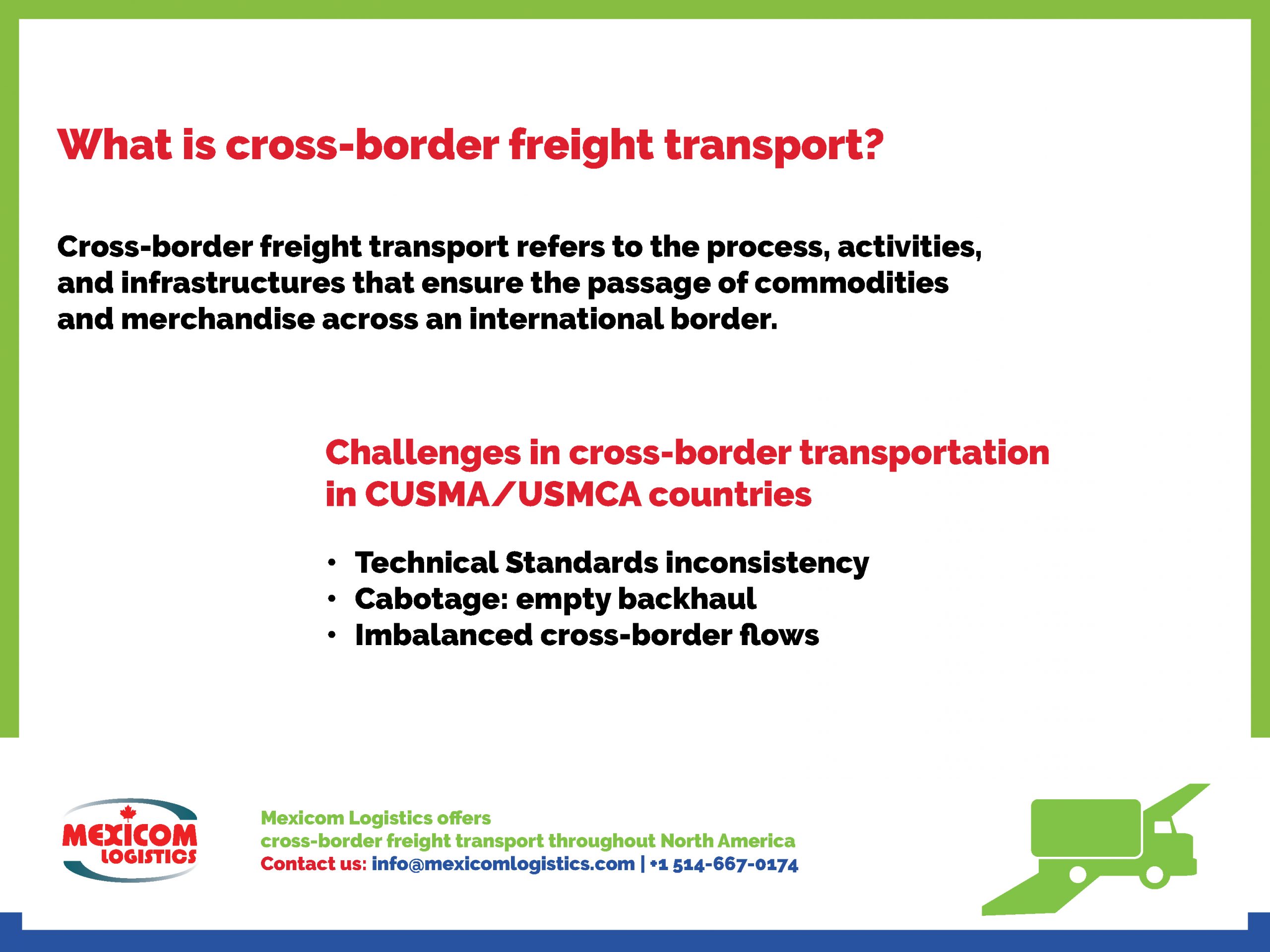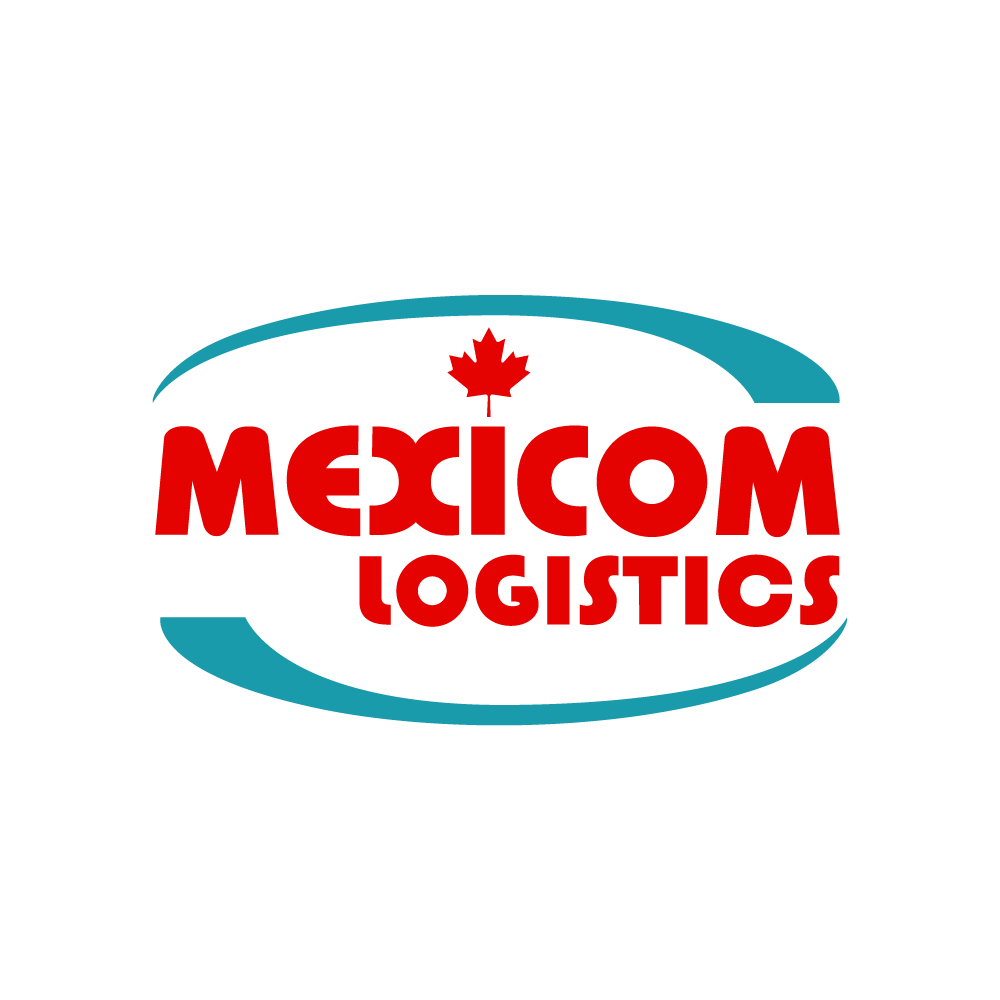The complexity of cross-border freight transport in CUSMA/USMCA (NAFTA) countries
What is cross-border freight transport?
Cross-border freight transport refers to the process, activities, and infrastructures that ensure the passage of commodities and merchandise across an international border.
Cross-border transportation in CUSMA/USMCA countries
North America is one of the largest trade blocs in the world. Crossing borders across the CUSMA/USMCA countries remain one of the greatest freight transportation and logistics challenges, particularly, in cross-border freight transport through the US-Mexico border. Challenges such as compliance with technical standards, cabotage restrictions and trade imbalances, make the cross-border freight transport within CUSMA/USMCA countries especially complex.

Technical Standards Inconsistency
Trucking, the main form of cross-border freight transportation between Canada, the USA, and Mexico, faces technical standards challenges. Truck size and weight standards vary among CUSMA/USMCA countries. For Example, Mexico and Canada allow higher gross weights than the United States.
Cabotage
Cabotage is the provision of transportation service between two points within a country by a company registered in another country. Permission to engage in cabotage is, in general, restricted in CUSMA/USMCA countries. For instance, a Canadian truck can transport freight from a Canadian origin to an US destination, and vice versa, but a Canadian truck can not transport freight between two points within the USA. Then, the Canadian truck has to return empty to Canada. Cabotage restrictions lead to empty back hauls.
Imbalanced cross-border flows
In North America, there is a higher demand for northbound loads than for southbound trucks. This creates an imbalance that affects rates, equipment availability and causes empty hauls.

In-bound loads considerations
Canada and the USA have an Agreement on Land, Rail, Marine, and Air Transport Preclearance, which enhances security and accelerates the legitimate flow of goods between the two countries.
Freight being transported from Canada to Mexico moves as an in-bond load. In-bond loads are those that are stored or transported through the United States but are not intended to be commercialized in that country, so they do not clear customs in the US border. In other words, the in-bonded shipment may be transported and stored in the United States without having to pay duties, taxes or customs costs related to the import process.
The in-bond cargo must be transported by a bonded carrier and, if applicable, be stored in a bonded warehouse in the United States.
No one knows better the North American cross-border freight transportation than Mexicom Logistics. We not only understand the language and the culture but also we master the process, including the documents, times and other requirements. As a result, we can guarantee our customers a cross-border freight shipping hassle-free.
Read also:
What you need to know in-bond shipments
Differences in freight transport in Mexico, the United States, and Canada
Sources:
Rodrigue, J-P (ed) (2017), The Geography of Transport Systems, Fourth Edition, New York: Routledge.
Move loads within CUSMA/USMCA countries
with Mexicom Logistics










